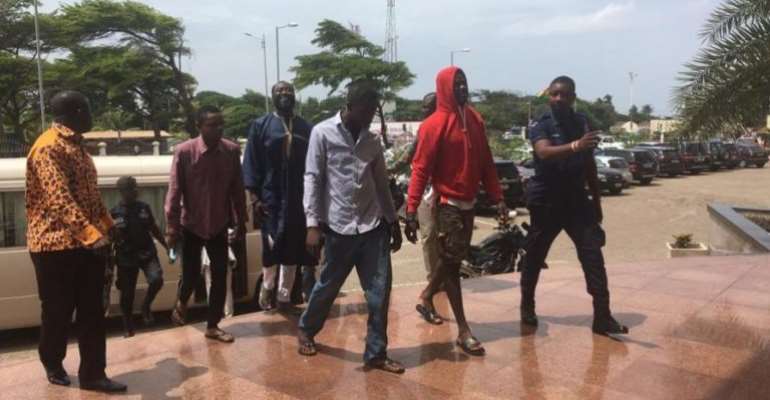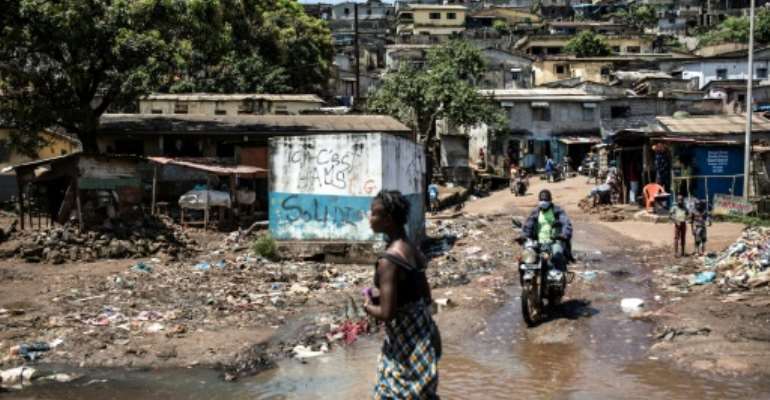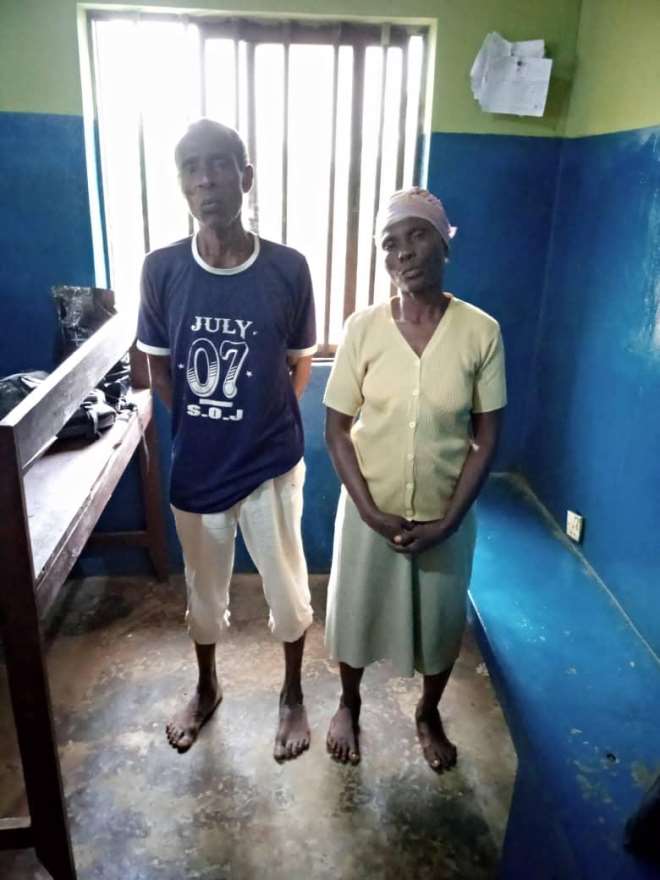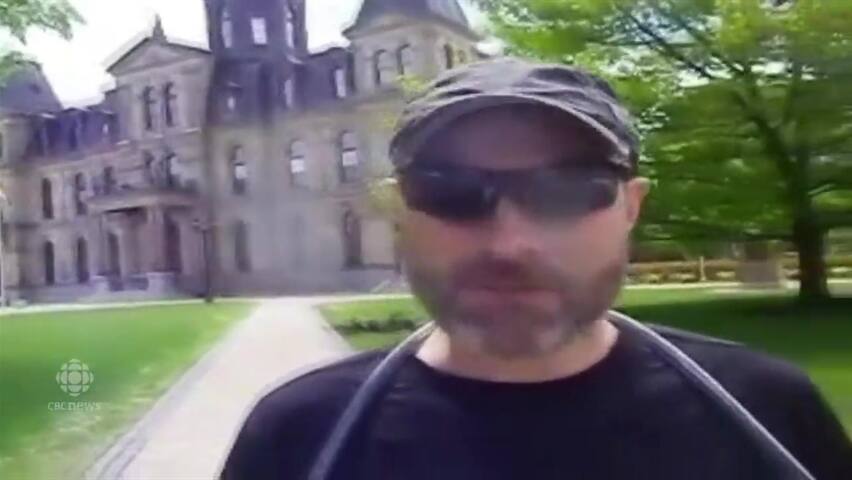By Francisca Serwaa Boateng, Esq.
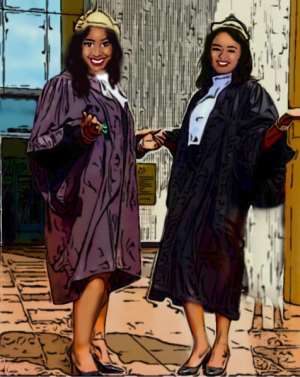
Introduction
Literature-in-English was my favourite subject in both my O’ and A’ Level classes at St. Monica’s Secondary School in Asante-Mampong. Apart from the richness it added to one’s language, Literature-in-English also gave a vivid historical account of how people lived during various epochs of human civilization. I loved the African Writers Series but Shakespeare was also a favourite and I followed his writings with keen interest. Now, one of our select books for drama at A’ Level was HAMLET and I thoroughly enjoyed it.
Very early in the book, young Hamlet gave his mother, Gertrude, a dressing down in his first soliloquy. Apparently, Gertrude’s offence was that she had married Claudius, her late husband’s brother. “Frailty, thy name is woman”, Hamlet famously declared. When Hamlet later met with his mother in her closet, his words were even more scathing.
Even at that early stage of life, my 17-year old brain got shifted into fifth gear as I started asking myself a lot of questions. They were questions about Hamlet’s rude attitude towards his mother: why wasn’t Hamlet angry at Claudius who married his mother Gertrude but rather vented his spleen on Gertrude who, most likely, did not have any choice in the matter?; Why did Hamlet bundle all women together and describe them as weak on account of his perceived weakness of one woman, his mother?, and so on.
To my eternal surprise, though Hamlet could blast his mother with words that felt like daggers in her ears, he failed to find similar strength to accomplish the task his late father’s ghost had set down for him. Hamlet could not avenge his father’s death but he had enough time and words to berate his mother whose only crime was her marriage to her late husband’s brother. Thus, was the beginning of my appreciation of gendered perspectives and stereotypical attribution of ‘problems’ to women when we have no practical solutions to the real problems that confront us.
Female lawyers and judges under the radar.
On Tuesday, 15th September 2020, the Ghana Bar Association held its virtual annual conference from the auditorium of the Court Complex in Accra. The conference was originally scheduled to be held in Bolgatanga but for the COVID-19 pandemic.
As is the tradition at the Bar’s annual conference, the virtual conference was reportedly addressed by the President of the Republic, the Chief Justice, the Attorney-General & Minister of Justice and the President of the Ghana Bar Association.
The theme for the conference was “Enhancing National Cohesion: the essence of free, fair and responsible electoral process”.
Of all the speakers who addressed the conference, none appeared to have received much coverage in the press than the President of the Ghana Bar Association. The Ghana News Agency reported in a publication titled “Refrain from showing too much skin – GBA President warns” on Ghanaweb that the Bar President has said that whether in court or at the office, lawyers and judges should refrain from showing too much skin.
He is quoted to have said that “bare arms are generally frowned upon in the office and never appropriate in court. Skirts or blouses should always be bottomed (sic) so that cleavage is never revealed...bare legs are never acceptable in court and neither are open toes (sic) shoes.
Anything flashy such as large gaudy earrings or sandals are also inappropriate.” He also reportedly added that the legal profession remained one of the most conservative concerning work attires and that hair and makeup should also be conservative. The Bar President is said to have added that female lawyers should always wear dark suits with trousers or knee-length matching skirts. The next day after the Ghana News Agency’s publication, other media houses published the story with such repugnant headlines that I shudder to repeat here.
The speech as published and attributed to the Bar President left a lot be desired. It was most condescending, sexist and betrayed the persistent patriarchal narratives that still feature in our discourse even in the 21st Century. Whenever it suits our whims, we take umbrage under the so-called “conservative” nature of our profession and rebuke others for no apparent reason other than sexism and discrimination. Whose sense of conservatism are we protecting? Is it that of the British or the Ghanaian?
The British whose legal system was imposed on us in 1876 have since moved away even from the prescribed apparel of old. They do not wear tail coats to court by prescription anymore and they have almost completely done away with the fake horsehair wigs and mournful black gowns.
Being ultra-conservative, we in Ghana have now embraced the hallowed wig and gown such that from the lowly magistrates at the District Court to the Lords temporal on the Supreme Court bench, pupils who are one week old at the Bar to veteran lawyers who are in their fiftieth year of practice, all must be festooned in these colonial relics to preserve the conservative nature of our profession. How noble! It is for the very reason of the enforced wearing of wigs and gowns that the admonition to female lawyers and judges to cover up appears contrived.
Throughout Ghana, every lawyer who goes to court must necessarily cover their heads
and body with wig and gown. How then do female lawyers and judges appear in court with disheveled hair, bare arms and legs and revealed cleavage while covered in wig and gown? As for the female lawyers and judges who wear large gaudy (whatever that means) earrings, flashy make-up and sandals (if not for medical reasons) to court, we need to await specimen from the speechmaker. Apart from wearing the usual dress, skirt or a pair of trousers, one cannot see how else female lawyers and judges can completely avoid exposure of parts of their body.
The admonition as issued transcends female lawyers and judges’ dressing in court; it applies with full force to their dressing in their offices as well. The last time I checked, lawyers in their offices, both male and female, wore normal office attire. Some even have ‘Friday African Wear’ policy in place.
There is nothing wrong with that. Choosing to prescribe what female lawyers and judges should wear even in their offices is distasteful, chauvinistic, and discriminatory. It is interesting to observe that, in the past 12 years when we had female Chief Justices, there was no complaint about how female
lawyers and judges dressed. In just about six months since the last female Chief Justice retired, the front-burner issue for the Bar Association is how to get an imaginary scantily dressed female lawyer or judge to cover herself up. At any rate, a President of the Association of Magistrates and Judges of Ghana (AMJG) cannot chastise members of the Ghana Bar Association any more than a President of the Ghana Bar Association can drag the name of a section of the Association of Magistrates and Judges of Ghana through mud.
As a profession, we have hidden behind an affinity with conservatism to stifle our own growth and development while society has passed us by. Admittedly, our profession is a noble one and we need to carry ourselves in a manner that befits our calling. However, it will be most unreasonable for one to expect a lawyer practicing in Ghana today to dress like a John Mensah Sarbah or an Annie Jiagge.
These two pioneering stalwarts of our profession belonged to their time and so do the present generation. In the days of Mr. Sarbah, it probably would have been heresy for a male lawyer to be seen wearing ‘happy socks’ and figure-hugging suits. These days, we have them in fashion and we love them.
In the days of Mrs. Jiagge, Brazilian hair was most likely to be found on Brazilian heads. Nowadays, we rock them over our kinky hair and we love them. Much as members of the Bar and Bench are keen to abide by the reasonable dictates of the ethics and code of conduct of the legal profession, it does not lie in anyone’s mouth to isolate the female section of the profession and hold it to public scorn and derision.
Some challenges that need to be addressed.
After all is said and done, there are real challenges confronting the legal profession today and as a profession, we cannot just sit in a corner and suck our thumbs while waiting for the next ritualistic annual conference to come round. We need to find space and time to address those pertinent issues.
a) Law school admissions
The foremost challenge confronting the legal profession in recent years is the law school admission process. Matters came to a head when a citizen put the issue before the Supreme Court. Though the Supreme Court and Parliament subsequently addressed aspects of the law school admissions process, the efforts appeared to have yielded little result.
The situation was not made any easier by a Chief Justice who maintained that for as long as she had anything to do with legal education, there will be ‘no mass production’ of lawyers in Ghana. No definition of ‘mass-production’ accompanied the edict so issued but the meaning became clear when, in the 2019-2020 academic year, only 128 out of 1,820 students who sat for the Law School Entrance examinations passed and were admitted to the Ghana School of Law. That means a paltry 7% of all potential students with LL.B Degrees was admitted.
Some law students even reportedly declared a ‘red week’ of demonstrations to register their protest against what they saw as a deliberate attempt to restrict entry into the legal profession. In the midst of the hullabaloo, the Bar Association’s silence was most deafening.
We chose to be silent lest we ruffle some pristine peacock feathers.
As the venerable Archbishop Desmond Tutu once wrote, “If you are neutral in situations of injustice, you have chosen the side of the oppressor. If an elephant has its foot on the tail of a mouse, and you say that you are neutral, the mouse will not appreciate your neutrality.” The late Margaret Thatcher it was who once advised that “standing in the middle of the road is very dangerous; you get knocked down by the traffic from both sides.” In the past, our association was the conscience of the nation.
The sad thing is that, even as the Bar Association has adopted a mum stance, the law school entrance saga remains a dominant national issue. Indeed, so central is the issue that a political party has included it in the party’s manifesto for the upcoming elections. Recently when the results for the 2020-2021 academic year law school entrance examination results were released, it was at once shocking and relieving.
It was shocking because 1,045 out of 2,720 students who wrote the examinations passed and gained admission to the Ghana School of Law; it was relieving because for the first time in several years, many LL.B graduates have the chance to undertake the professional law course. Interestingly, nothing much has changed in the physical infrastructural fortunes of the law school in the past year but there has been such a quantum leap in admissions.
Perhaps, if we had added our voices to the call for expanding access to legal education when it mattered most, maybe, just maybe, relief may have come a tad earlier. It is still not late for us to show interest and commitment in the affairs of the school that provide the membership of our association.
b) Enforcing the provisions of our association’s Constitution and Regulations
In 2018, our Constitution and Regulations received a makeover through an amendment which had been in the works since the last amendment of 1994. However, huge portions of the Constitution and almost the entire provisions in the Regulations lie dormant. For example, under the GBA Constitution, one of the objects of the Bar Association is the organization and promotion of legal education and continuing professional development programmes.
Over the years, we have been excited to conduct the less crucial continuing professional development programmes, but we shy away from even discussions bordering on the crucial subject of the organization and promotion of legal education. The Regulations of the GBA mandates the General Council of the Bar to do the following:
- To arrange the professional training course for lawyers in Ghana; - To register foreign-qualified lawyers to practice in Ghana;
- To organize the call of lawyers to the Bar;
- To fix annual subscriptions for Bar Association membership; - To register all professional chambers;
- To enforce disciplinary measures for professional misconduct under the Code of Ethics; and so on.
We need to ask whether, as an association, we have been fulfilling our mandate under the GBA’s Constitution and Regulations.
c) The e-justice system
Last year, the e-justice system was formally launched by the President of the Republic, signaling the end of the old manual justice delivery system and its attendant problems. The euphoria that greeted the launch has, however, given way to disappointment because nothing much has changed. We still carry processes physically to court and file, among other frustrations which we thought the e-justice system would have wiped out.
d) The effects of the COVID-19 Pandemic on the legal profession
This year, the COVID-19 pandemic has changed the nature of our profession and law practice for good. Globally, most lawyers’ livelihoods and businesses, just as all facets of life, have taken a hit and we need to device practical ways to weather the storm till calm is restored. The Bar Association’s role in this endeavour will be very crucial.
These are some of the pertinent issues that ought to engage our attention. As an association, our time will be better served in addressing some of these issues rather than engaging in our favourite pastime of tickling the ears of some retiring judge with ill-deserved panegyrics.
So yes, the Bar Association has challenges and when we look diligently, we will find that the challenges go beyond the length of a female lawyer’s skirt and the blush on her cheeks.

Francisca Serwaa Boateng, Esq., © 2020
The author has 5 publications published on Modern Ghana.



